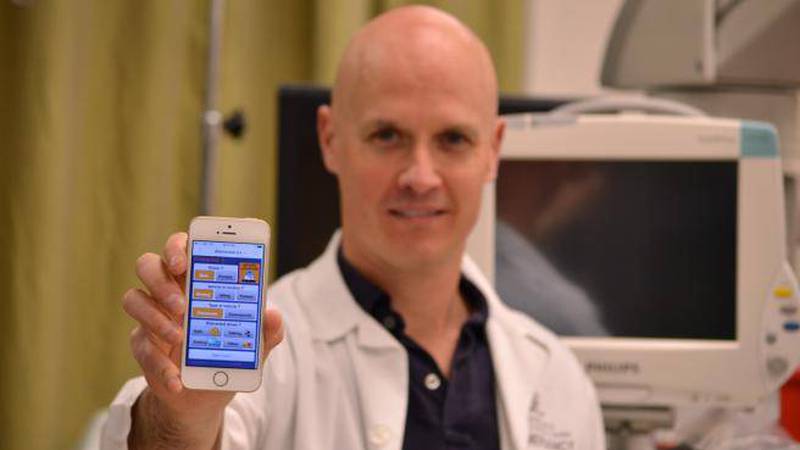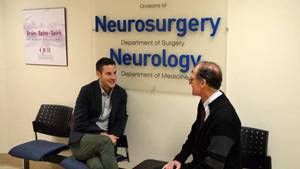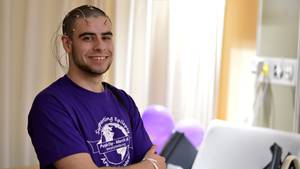We all do it. We back up while we put our seat belt on; we eat and drink; check our GPS; and answer just the really quick and necessary text. We make excuses and say it’s OK to pick up our phone at a stoplight. But the reality is no matter how innocent its origin, doing so is an incredible risk.
Six years ago in Halifax, the grim reality of distracted driving was in the spotlight. A young woman walking down Spring Garden Road was crushed into a glass window by the rear end of a car. She nearly lost her leg and the driver admitted to using her smartphone and was charged.
This story and dozens with far bleaker outcomes motivated longtime trauma physician, Dr. Robert Green, to start tracking incident data and lay the foundation for a research program aimed at reducing and preventing distracted driving.
“Smartphones are a part of our hand, part of what we do and that impacts what happens when we drive,” Dr. Green says. “The impact is just as great as intoxicated driving and we think it’s more prevalent, which is why we’ve created a research program at the QEII and Trauma Nova Scotia to determine the true prevalence of distracted driving the best we can."
The first step is a smartphone application that gets the public involved.
Since joining the QEII in 2002, Dr. Green says the number of distracted driving-related incidents ending up in the emergency department continues to climb.
Part of the problem is most car manufacturers are focused on the high-tech driving experience, offering a hands-free environment but one full of enticing distractions. Studies show that cell phone access and use is at an all-time high in Canada. Today, up to 90 per cent of the population owns a device, a number that hovered around 50 per cent just six years ago.
“It’s difficult to confirm if a driver that’s been in an accident was distracted, so the numbers for tracking incidents are off,” says Dr. Green.
The
trauma-ns.com/research-in-
progress) aims to fill in the gaps. Jointly created with a colleague at McGill University in Montreal, the app allows pedestrians and passengers to log instances of distracted driving as they see them. Dr. Green logs entries during his morning walk to the hospital and his daughter does her part from an iPad in the backseat.
“Our goal with the app is to create a robust data set to accurately describe the true prevalence and healthcare impacts of distracted driving,” Dr. Green says. “The app asks pedestrians who observe distracted drivers to log their gender, whether it’s a commercial vehicle and if they’re distracted, then what were they doing?”
The app launched last summer and to date, more than 25,000 observations of drivers have been logged, each adding to the dataset and providing physicians and the community at large a closer look at the very real prevalence of distracted driving.
Estimates show about 2,000 Canadians are killed and up to 10,000 are seriously injured each year on Canadian roads and highways. It’s unclear how many collisions involved distracted drivers.
But what is clear to Dr. Green is distracted driving is putting Nova Scotians at risk and potentially preventable trauma incidents keep arriving at the QEII's emergency department.
“We accept that some injuries happen by chance, but when you create a circumstance that almost predicts that a crash is more likely to happen, it’s really upsetting to the healthcare team,” Dr. Green says. “Distracted driving with cellphones and the emerging problems that come with it are absolutely affecting daily life in Nova Scotia.”








